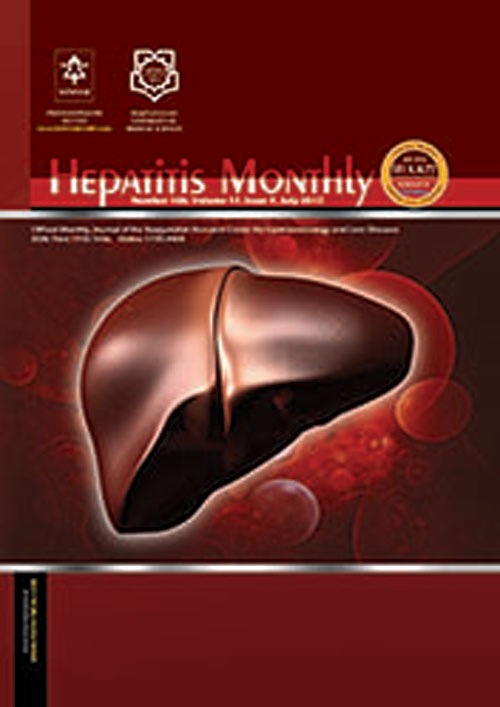فهرست مطالب

Hepatitis Monthly
Volume:19 Issue: 4, Apr 2019
- تاریخ انتشار: 1398/02/06
- تعداد عناوین: 2
-
-
Page 1ContextNon-alcoholic steatohepatitis (NASH) has become a prevalent disease worldwide as well as a leading cause for liver transplantation in the next decades. Thus the purpose of this review is to evaluate the outcomes of NASH patients after liver transplantation in comparison to non-NASH patients.Evidence AcquisitionStudies published in English before February 2018 were retrieved through literature searches in PubMed, Web of Science, Wiley Online Library, Research Gate, and EMBASE. Studies that compared the outcomes of liver transplantation for NASH and other liver diseases were eligible.ResultsA total of 13 studies were included in the current study. Compared with non-NASH group, NASH patients presented higher mortality after liver transplantation in 1 and 2 years, which might associate with recipient age, sex, diabetes, and hypertension. However, the 3- and 5-year survival were similar between the two groups. Infection was the most prevalent etiology of mortality in NASH group.ConclusionsThe NASH patients receiving liver transplantation presented higher mortality in the first two years and infectious complications were fatal for them. Therefore, more attention should be paid on NASH patients with infections, especially in the first and second year after the transplantation.Keywords: Non-Alcoholic Steatohepatitis, Non-Alcoholic Fatty Liver Disease, Liver Transplantation, Meta-Analysis
-
Page 2ObjectivesThis study aimed is to evaluate the association between dietary fructose intake and risk of nonalcoholic fatty liver disease (NAFLD).MethodsNewly diagnosed patients with NAFLD and age matched controls were asked about their dietary intakes. Fructose consumption was assessed using a reliable and valid food frequency questionnaire and fructose intake was calculated using food composition table.ResultsIn the crude model, subjects in the highest quartile had more than 3.08 times higher risk of NAFLD in comparison to those in the lowest quartile of the fructose intake (OR: 3.08; 95 percent CI: 1.87 - 5.06), (P < 0.001). Also, adjustment for age, sex, physical activity (MET-h/wk), body mass index (kg/m2), energy intake (kcal/d) and simple sugar strengthened this association (OR: 3.54; 95 percent CI: 1.81 - 6.93) (P = 0.003).ConclusionsOur results indicate that higher intake of fructose is significantly associated with the higher risk of NAFLD; this association remained significant after adjustment for known confounding factors. Further studies are required to find the cut point for safe daily fructose consumption alone or in combination with dietary fiber sources.Keywords: Carbohydrate, Fatty liver, Fructose, Sucrose, Non-alcoholic Fatty Liver Disease

